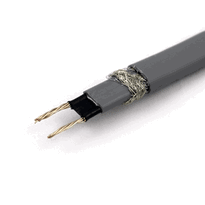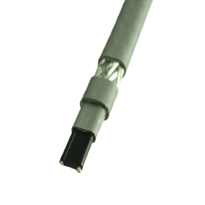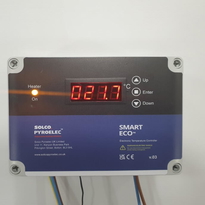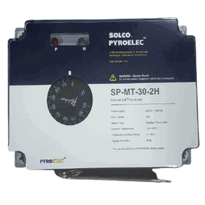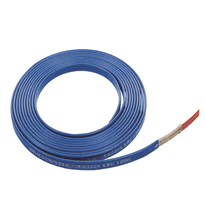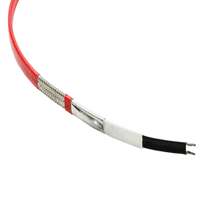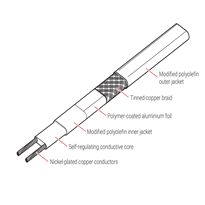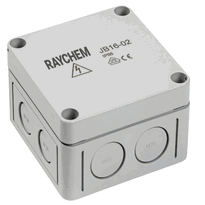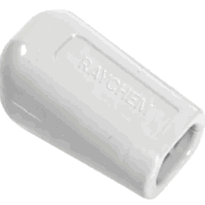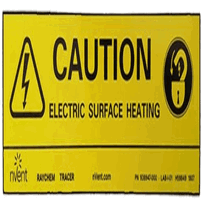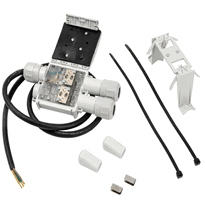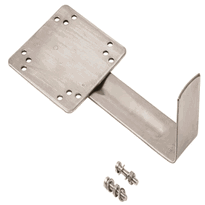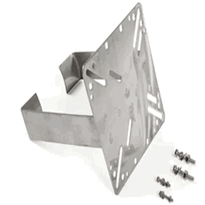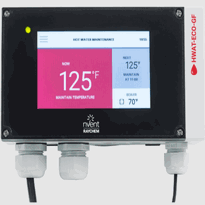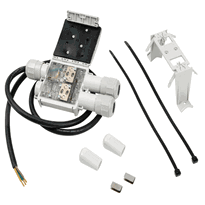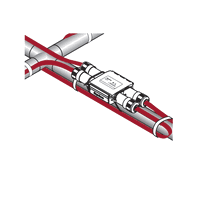Easy Heat Pipe Heating Cable
EasyHeat pipe heating cables are designed to prevent freezing in water pipes, roof gutters, and other outdoor applications by providing reliable, self-regulating heat. Available in various power ratings from 3 to 8 watts per meter, they feature durable construction with embedded polymer cores that adjust heat output based on temperature, ensuring energy efficiency and safety.
Proper installation following manufacturer guidelines is essential to optimize system performance and safety. Adhering to best practices during setup can significantly improve the effectiveness and longevity of the heating cable, ensuring compliance with UK regulations and standards.
By choosing the right power rating and following recommended installation procedures, users can protect their plumbing and prevent costly damage caused by freezing conditions. EasyHeat pipe heating cables offer a dependable solution for safeguarding outdoor water systems throughout the colder months.
Overview of EasyHeat Pipe Heating Cable Types
EasyHeat provides a comprehensive selection of pipe heating cable types designed to prevent freezing and ensure the proper flow of fluids within pipes across a range of environments.
The portfolio includes pre-assembled cables such as the EasyHeat AHB, which offers reliable freeze protection for both metal and plastic water pipes. These cables are equipped with integrated thermostats that activate at 3 °C and deactivate at 7 °C, operating efficiently at 7 watts per meter even in temperatures down to -40°C.
In addition, EasyHeat SR Trace cables are self-regulating, allowing for adjustable heat output with power densities of 3, 5, and 8 watts per meter. They dynamically adapt to temperature variations, delivering more heat to colder sections, thereby making them suitable for a variety of pipe sizes and installation scenarios. Energy-efficient operation ensures minimal power consumption while maintaining effective freeze protection.
Key Features and Power Ratings
The key features and power ratings of pipe heating cables are essential for assessing their suitability for a variety of installation requirements and environmental conditions. EasyHeat SR Trace cables are available in three power densities—about 3, 5, and 8 watts per meter—offering flexibility depending on pipe material and ambient temperatures. Higher ratings provide greater heat output. These cables integrate innovative heat technology that ensures efficient and uniform thermal performance across different applications.
EasyHeat AHB cables deliver a consistent 7 watts per meter, specially designed for freeze protection down to -40°C. Voltage options range from 230 to 277 VAC, incorporating adjustment factors to optimize heating performance and maintain consistent heat output despite voltage fluctuations. The cables are engineered to operate safely and efficiently across a range of voltages, ensuring reliable freeze protection. The maximum temperature ratings, such as 65°C for continuous operation, influence both the longevity and safety of the system. Additionally, maximum cable lengths vary according to power rating and voltage, ensuring effective freeze protection without voltage drop or risk of overheating.
These cables are adaptable and efficient, suited to a diverse range of applications across the UK, ensuring reliable performance in demanding conditions. The use of sustainable materials and technological advances in these heating cables aligns with Baumit’s commitment to eco-friendly and resilient construction solutions.
Construction and Material Composition
Constructed with a self-regulating polymer heating core embedded within layered insulation, these cables are engineered to ensure uniform heat distribution while minimizing energy consumption. The core material is designed to automatically adjust its heat output in response to temperature changes, preventing overheating and conserving power. The self-regulating feature ensures energy efficiency and safety under various conditions. Surrounding the core, durable PVC outer jackets protect against moisture, UV exposure, and mechanical damage. Meanwhile, insulation layers retain heat and provide electrical isolation. This combination of materials enhances the cable’s durability and performance across diverse environments. The cable’s construction allows for easy wrapping around pipes and secure fastening under insulation jackets, with an approximate diameter of one inch (about 25 millimeters). This design balances flexibility and functionality. An integrated energy-saving thermostat embedded within the cable further reduces unnecessary power use by automatically activating or deactivating based on ambient temperatures. Collectively, these materials and construction features ensure reliable and safe operation across various environmental conditions, suitable for use in numerous UK applications.
Ideal Applications and Usage Guidelines
These heating cables are suitable for a broad spectrum of applications that demand effective frost protection and consistent temperature maintenance across various environments. They are particularly useful for safeguarding metal and plastic water pipes in residential, commercial, and industrial settings, including roof and gutter de-icing to prevent damage caused by ice build-up. Thanks to their self-regulating properties, they can be safely wrapped around pipes, flanges, or valves, ensuring optimal contact and insulation. Self-regulating heating cables can automatically adjust their output based on temperature changes, improving energy efficiency. Proper installation involves cutting the cable to the desired length, ensuring direct and uniform contact with the pipe surface, and following the manufacturer's hardware and instructions carefully. These cables dynamically adapt to ambient temperature variations, which helps reduce energy consumption while providing reliable performance throughout the winter months. Designed with durable moisture- and UV-resistant jackets, these heating cables are well-suited for outdoor and semi-exposed environments. This resilience ensures long-term operation even in harsh weather conditions, supporting maintenance-free frost protection and efficiency. Additionally, selecting suitable insulation materials enhances overall energy savings and operational safety.
Ensuring Safety and Compliance in Installation
Ensuring safety and compliance during the installation of heat cables requires meticulous attention to established standards and best practices to avert hazards and guarantee reliable operation.
Proper placement of the cables is vital; heat cables should be applied directly onto the surface of the pipe, avoiding coverage by insulation, and laid flat to prevent the formation of hotspots. Securing the cables at intervals of at least 30 centimeters with temperature-rated tape or ties helps maintain consistent heat distribution.
Prior to installation, it's essential to verify that the pipes have been properly tested, surfaces are clean, and the cable remains undamaged. Ensure the electrical system is grounded properly to prevent electrical shocks or faults. Additionally, using appropriate insulation materials compatible with the heat cable safeguards the system’s efficiency and prevents potential fire hazards.
After installation, the pipes should be insulated using materials compatible with the heat cable, ensuring that the insulation doesn't cover or impair the cable’s function. Care must be taken to avoid covering the cables with combustible substances, which could pose a fire risk.
Compliance with electrical regulations is mandatory. This includes installing residual current devices (RCDs), often referred to in the UK as ground fault circuit interrupters (GFCIs), and employing weather-rated junction boxes suitable for external environments.
Adherence to these practices ensures a safe, efficient, and regulation-compliant heat tracing system, minimizing risks and supporting long-term, dependable operation.
Conclusion
Proper selection, installation, and adherence to safety guidelines are essential for maximizing the effectiveness and reliability of Easy Heat pipe heating cables. Understanding their construction, power ratings, and suitable applications ensures optimal performance while maintaining safety compliance. By following detailed instructions and manufacturer recommendations, users can achieve efficient heat transfer and avoid potential hazards. Ultimately, thorough knowledge and careful execution promote long-term durability and safety in various heating applications involving these specialized cables.








